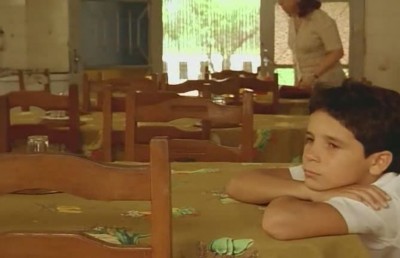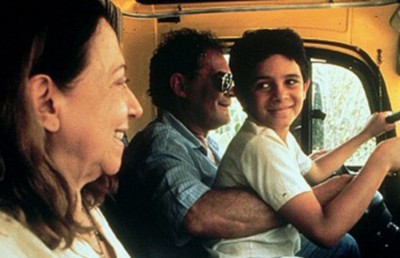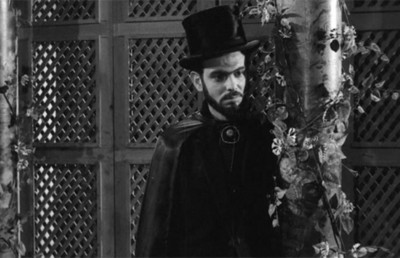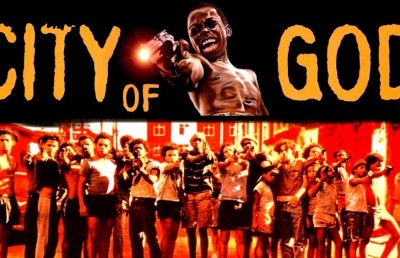Coleção Zé do Caixão — 50 anos do cinema de Jose Mojica Marins
Coffin Joe
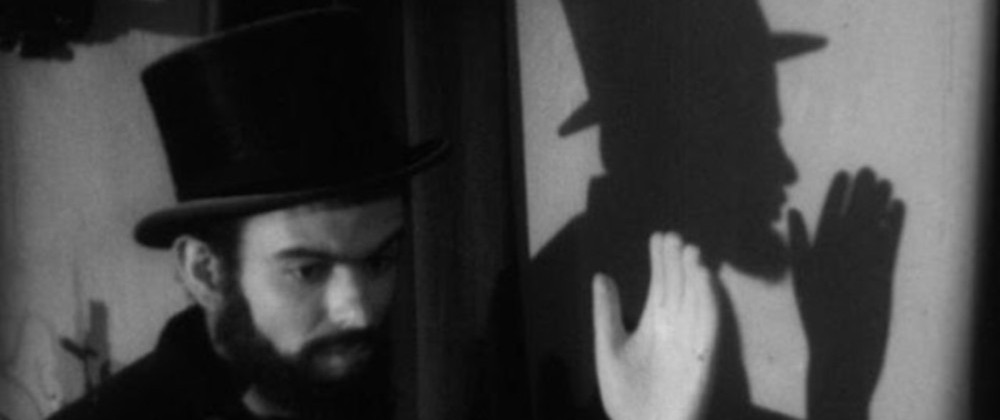
During the third phase of Brazilian Cinema Nôvo in the late 1960s/early1970s, a group of filmmakers reacted to the “Europeanized and elitist language” that they saw in the films of Glauber Rocha, Carlos Diegues, and Nelson Pereira dos Santos. These reactionaries “radicalized the ‘aesthetics of hunger’ by turning out inexpensive black-and-white films in quick succession which rejected technical ‘perfection’….” [1] In São Paulo these filmmakers, “[t]aking their name from a working class district called Boca do Lixo (Mouth of Garbage),” called their movement cinema do lixo—trash cinema. [2] Adopted by this group was the then-unknown film director José Mojica Marins.
Marins started his career as a teenager, making silent 16mm short films with his friends. They hand-delivered the films to nearby towns and local carnivals and frequently supplied live commentaries during shows. Marins was good at raising money from a very young age and he says that the initial funds for these ventures frequently came from panhandling on the streets or from the collection plate he passed around in the theatre where his parents worked. [3] The tenaciousness and economy of style he learned early in his career made it possible for him to pursue filmmaking over the decades. Despite harsh media criticism, constant government persecution and censorship, and occasional neglect, Marins is still making films and television programs today.
By the late ’50s, Marins’ reputation found him a place in the feature film industry, where he garnered critical acclaim… of a sort. He was repeatedly called a “pervert,” and in reference to The Adventurer’s Fate (A Sina do Aventureiro, 1959)—the first widescreen film shot in Brazil and possibly the first “official” Brazilian western—one critic called Marins “the murderer of Brazilian cinema.” [4] This label was one that Marins would gladly bear in the years to come.
Marins achieved stardom with the success of At Midnight I’ll Take Your Soul (À meia-noite levarei sua alma, 1964), the first Brazilian horror film and a film whose protagonist, the brutal and sadistic undertaker Zé do Caixão, was quickly enshrined as a working-class cult hero. Zé is a supreme existentialist and is, literally, the villain in the black hat. Played by Marins, Zé is an imposing figure with his cape and top-hat, sunken eyes, black beard, and long and curving fingernails. Zé’s unrelenting blasphemy and gory escapades instantly cemented Marins’ reputation among São Paulo theatregoers, and the regional Brazilian censors. Driven by the desire to father a child, Zé murders, rapes and tortures, respectively, his wife who cannot bear him a son, his best friend’s wife who rejects his affections, and the town doctor who can testify to his crimes. On several occasions, he takes time out from his quest to achieve “the immorality of blood” and torment the local townspeople, who he accuses of being confined by their fears and superstitions. Zé gladly sinks his teeth into an leg of lamb on Holy Friday and forces others to partake as well. He severs a man’s fingers with a broken beer bottle when the man refuses to pay Zé a gambling debt; Zé then offers to pay for the medical treatment.
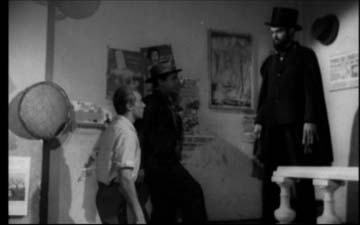
In his ultimate transgression, Zé yells at God, mocking the divine and demanding proof of the metaphysical. In the end, Zé gets his comeuppance and his victims rise up to drag him into the grave. But, he returns again in a sequel, This Night I’ll Possess Your Corpse (Esta noite encarnarei no teu cadáver, 1967), and makes guest appearances in many of Marins’ later films. Marins’ disappointment with the church, embodied in Zé, was inspired when an angry priest yelled at him and attempted to expel him for coming to services late. It escalated into a life-long crusade, articulated on and off screen, against the most powerful institution in Brazil.
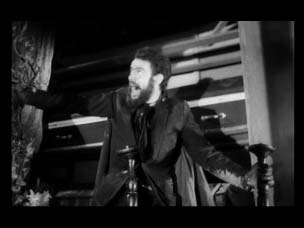
The fusion of popularity and populism that Marins discovered with At Midnight I’ll Take Your Soul created a bridge between the Cinema Nôvo directors and the lixo group:
The critics at first ignored the film, and later attacked its ‘vulgar sensationalism’ and ‘crude imagery.’ But support came from a source Marins never expected: the intellectual elite, who compared him to Luis Buñuel and, through the mouth of Glauber Rocha, head honcho of the Cinema Nôvo movement […], proclaimed him, ‘the greatest moviemaker in the whole world.’ [5]
It makes sense that Rocha would appreciate both the widespread appeal and unconventional style of Marins’ film. Marins had given birth to a new genre in Brazilian cinema. He radically departed from the Hollywood imports that glutted Brazilian theatres and he accomplished what many of the Nôvo directors could not: he successfully established a dialogue with the people.
Throughout his career, Marins never divorced himself from his audience or his working class background. He has continued to reward the loyalty of his fans and nurture his cult image. He held open auditions and subjected prospective actors and actresses to a variety of tortures: he covered them with spiders, snakes, and toads, forced them to eat worms, buried them alive, and shocked them with electric wires. He then cast the survivors in his films (although, to be fair, only a few of them died, and none on set). He held public workshops, personally educating anyone who was interested in learning the technology of filmmaking. He even ran for public office as a member of the Brazilian Labour Party, “…in defense of gravediggers, trash collectors, and filmmakers,” [6] unfortunately splitting his vote with a write-in campaign for Zé do Caixão.
To the non-Brazilian observer, most of the stories about Marins and his films seem outlandish and exaggerated on both sides. Now, thanks to the efforts of the new Brazilian distributor, Cinemagia, a DVD box set of Marins’ films is available, allowing audiences to experience the Marins canon and the Coffin Joe legacy first-hand. The set includes six of Marins’ best-known films:
At Midnight I’ll Take Your Soul (À meia-noite levarei sua alma, 1964)
Part of the appeal of the first Zé do Caixão film is the evidence of Marins’ abiding love for horror films of the ’30s. Zé’s diabolical schemes, carefully plotted from inception to failure, make it evident that Marins creates a monster to rival the creatures of Universal’s horror cycle. The calculated evil of Zé’s deeds is underscored by a familiar visual style featuring eye lights, abundant close-ups, dissimulative montage, and stagy compositions. Even Marins’ tremendous physicality, exacerbated by an over-the-top costume, is reminiscent of Karloff or Lugosi.
While the visual aesthetic is reminiscent of a past era, Zé’s villainy is infused with the gore and viciousness of ’60s horror. The camera does us no favours in obfuscating the parade of torn, bloated, and melted flesh as Zé launches his campaign of torture. The malevolence of the horror villains who have proceeded him is spliced with the characteristics and pragmatic tactics of a brutal dictator. There is no tragedy or irony here. Zé revels in the pain he inflicts. He demands otherworldly retribution and his victims are more than willing to return from the grave to meet his challenge.
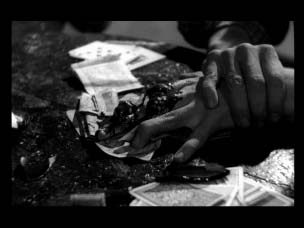
This Night I’ll Possess Your Corpse (Esta noite encarnarei no teu cadáver, 1967)
The sequel to At Midnight I’ll Take Your Soul adds to the catalogue of Zé‘s evil deeds without much fanfare. This Night I’ll Possess Your Corpse doesn’t break ground like its predecessor. It doesn’t even match the original’s level of excess. Instead, Marins incorporates stock plots and characters from almost every genre and puts them to good use, bending them all to his own design. In This Night, Zé transcends the borders of the horror film and becomes a villain to top all villains. He is the moustachioed kidnapper of virgins and the gunslinger in the black hat. Only this time, no one rescues the damsel in distress and the mercenaries hired to take him down are killed with dirty tricks.
Like all of the great monsters of the horror film, Zé simply could not stay in the grave. The mob of angry villagers discovers him, barely alive, lying beside the graves of his victims. As angry mobs are wont to do, they deliver Zé to a hospital where he can recover from his ordeals. He is rapidly cleared of all criminal charges against him and he returns home.
This time around, Zé adopts a new strategy for conceiving the perfect child. He devises a contest to discover a strong woman who will create the perfect child-and-heir with him. He kidnaps all of the women in town and gleefully torments them until he discovers his perfect mate. The losers, at least those who aren’t already dead, are sent to die in a dungeon chamber filled with poisonous snakes. As Zé watches the women scream in torment (because, of course, his bedroom has a view of the chamber) he woos his new mate. All of this Sadism goes awry as one of the dying women curses Zé to an eternity without children. Topping it all off, Zé’s perfect woman falls in love with him, revealing a unforgivable flaw. A disappointed Zé sends her away and quickly discovers another cliché-ridden prospect: the colonel’s daughter.
Revelling in the procreative potential of his new relationship, Zé is suddenly dragged off to Hell where his existential cockiness goes limp. He stumbles through a frozen Technicolor Hell where bloody limbs protrude from the walls and ceiling of icy caves and demons prod the damned with pitchforks. In contrast with the rest of the film, it is truly otherworldly. The audience is plunged into the grotesque landscape alongside Zé, caught between laughter and revulsion, for what seems like an eternity. There is no reprieve. Marins only had one roll of colour stock for the film, and it is clear that none of it was wasted on the cutting room floor. As Marins comes close to the end of the reel, Zé comes face to face with the devil. Zé learns that his hypothesis was not correct. Yes, there is a hell. And, yes, he is destined for eternal torment after his death. On that note, Zé wakes up. Was it all a dream?
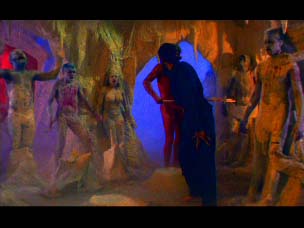
There’s not much time to think about it. Having relations with the colonel’s daughter has consequences. Zé is hounded by a group of thugs. He narrowly escapes them (the good old fingers in the eyes works wonders, especially with Zé’s fabulously long nails), leaving a trail of corpses. The good villagers are once again quite upset by all of this, so they chase him into the swamp. Having nowhere to run, Zé drowns… or does he?
The Strange World of Coffin Joe (O estranho mundo de Zé do Caixão, 1968)
Marins presents an anthology of three short films. “The Dollmaker” [“O Fabricante de Bonecas”] is a simple story about a series of thugs who attempt to victimize a dollmaker and his daughters and wind up being used for spare parts in the lifelike toys. Horatio Higuchi aptly notes that the film has a “generally sleazy atmosphere.” [7] This is imparted by the montage, which features heavy helpings of cleavage and leering faces. (I was about to say equal helpings, but if you’ve been paying attention, you already know that in Marins’ films the cleavage wins out.) “The Dollmaker” is a quick study in the relationship between horror and the significance of the male gaze. But, as in the film that follows it, the significance of the voyeurism may be lost on an audience who just ends up feeling dirty.
In “Tara (Obsession),” a lonely, indigent, balloon salesman stalks a woman he sees on the street and is undeterred by the fact that she is suddenly murdered on her wedding day by a jealous woman. Carnival music and ambient noise accompany his observations and his fantasies in an episode without dialogue. To put it simply, if Eisenstein and Fellini could collaborate on a film about necrophilia, it would look something like this.
The final film, “Ideolgia (Theory),” features a professor Oãxiac Odéz, who appears on a television panel discussion to argue his case that instinct is the driving force of humanity. (We can’t help but notice that Odéz, played by Marins, bears a resemblance to Zé do Caixão—a resemblance not lost on the other characters either.) Odéz fails to convince his opponents of his theory during the program, but he invites Alfredo, his most vocal critic, over to his home to offer proof. The unsuspecting journalist and his wife, Dilma, accept the invitation and are subjected to a presentation, put on by Odéz’s captives, that conflates sex, torture, and cannibalism. This presentation features some of the most gruesome and stomach turning sequences of any of Marins’ films. This is certainly no small feat. Alfredo and Dilma are predictably appalled. They then become Odéz’s newest experiment. He imprisons them and deprives them of food and water to reduce them to their instincts. Each day of their captivity, Odéz reads a passage from Genesis and watches his prisoners become more and more desperate. After several days of this torture he releases Dilma, who has by this point entirely abandoned her desire for self-sacrifice. She eagerly feasts on a fountain of her husband’s blood.
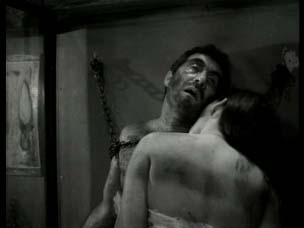
Ultimately, the two sceptics end up on Odéz’s dinner table. It’s just another day at the office for Zé do Caixão’s “real life” counterpart. Luis Gasca nicely sums up this piece with his comment, “Perhaps the best case for Marins’ theory of Instinct prevailing over Reason resides in the viewers’ disposition: Reason tells them to leave the theatre not to watch the atrocities on screen, but Instinct glues them to their seats.” [8]
Awakening of the Beast (O Ritual dos Sádicos /O Despertar da Besta, 1970)
Marins’ grand exploitation film chronicles in explicit detail the “depravity” of drug users. We are presented with the theories of Dr. Sergio, a psychologist, who argues that all perversions can be found in all people. He believes that drugs allow these perversions to surface and he provides ample illustrations of the “insidious nature of drugs” with stories of strip shows, orgies, prostitution, sexual harassment, rape, adultery, and suicide. These stories, infused with numerous scenes of individuals smoking, snorting, and injecting various drugs, the occasional police crackdown, and gratuitous sex, are framed by a panel discussion of Dr. Sergio’s theories and his most recent experiment. Included on the panel of experts is filmmaker José Mojica Marins, for reasons that are soon revealed.
To prove his theories, the doctor has gathered a group of addicts and injected them with LSD. He has also, by taking them to a racy theatre, a night club, and a screening of At Midnight I’ll Take Your Soul, discovered the perfect stimulus for his experiment: the subjects unanimously declare that Zé do Caixão had the most powerful effect on them. When the doctor injects them with the drug they all fall into a jagged, colourful hallucination hosted by Zé. They are alternately entertained, awed, or brutalized by Zé in this crazy world and each sees something different, according to his or her disposition. Dr. Sergio then reveals his most significant discovery when he admits that he used no drugs on his patients whatsoever. The power of suggestion was sufficient. “Drugs,” he explains, “are but an excuse to release the instinct in each human being.”
One of the triumphs of Awakening of the Beast is the parallel Marins draws between Dr. Sergio’s analysis of drugs and criticism of Zé do Caixão. It is Marins’ intention to prove that Zé is merely a scapegoat for critics who are unable to deal with the real causes of social ills. Zé, too, is merely an excuse for outrageous behaviour. It is not Marins’ fault if critics are naive enough to think that misogyny, anger at the church, or violence are his creations.
Marins is clever to cast himself in the film as a thoughtful artist who has been harshly condemned by critics unable to separate the filmmaker from his creations. One of the members of the panel accuses Marins of not being intellectually prepared to understand the discussion. But, the critic makes the mistake of calling him Zé. Marins is quick to point out that the man can’t seem to understand the difference between an artist and his work. Marins’ persona is further cultivated with clips from a real television program Quem Tem Medo da Verdade? (Who’s Afraid of the Truth?). On the program, ostensibly presented as part of Dr. Sergio’s flashback, Marins defends his art against a panel of “judges” who will decide if he is “filmmaker or fraud.” Marins debates with a group of intellectuals who react to him with hostility, deriding his art and mocking his lack of education. In the end, Marins is acquitted six votes to one and he concludes with the comment that “what really matters is what we think of ourselves.” Marins’ introduction on the program also makes the cut, further raising his esteem with a comment from Glauber Rocha that Marins is “the leader of the New Brazilian Cinema” and another from Anselmo Duarte that he is “a filmmaker of undeniable talent.”
Awakening of the Beast is a very satisfying film. Even if the audience deems much of the content tasteless (and that is likely the intended effect), the fusion of social critique and artistic defence in such an outrageous posture is fascinating. Marins’ personal statement was banned for 16 years, although Marins re-edited a great deal of the acid trip footage into a subsequent film. Shot in 1970, O Ritual dos Sádicos was not released until 1986, when it appeared at the RioCine Film Festival under the title O Despertar da Besta. At the festival it was awarded prizes for Best Actor (José Mojica Marins) and Best Screenplay (Rubens F. Luccetti).
Finis Hominis – The End of Man (Finis Hominis – O Fim do Homem, 1971)
Finis Hominis is simply bizarre. Marins casts himself as a prophet who works miracles and speaks out against the hypocrisy of the people he encounters. He brings a mourned loved one back from the dead for his family, but the relatives reject and fear the man when he awakes. He saves an adulteress as she is attacked by the family of her womanizing husband, and then exposes the insincerity of a commune of peace-loving (and topless) hippies who want to follow him; when he tosses out handfuls of coins to the crowd their joy and music are rapidly replaced by brawling and a lot of hair-pulling. Clearly, Finis Hominis is not a subtle film. As with Marins’ other films, it continues to express the message that faith and compassion are not interchangeable and are occasionally contradictory. The saga of Marins’ turbaned, robed miracle-worker appears to be an attempt to express the Zé do Caixão motto and simultaneously mitigate criticisms of violence and vulgarity in his films. However, unless Marins had some very open-minded critics, it is unlikely that the gratuitous sex and nudity in Finis Hominis swayed them to his cause.
Hallucinations of a Deranged Mind (Delírios de um Anormal, 1978)
A paean to excess. A monument to self-importance. The epitome of trash cinema. Hallucinations of a Deranged Mind plunges us into the nightmares of Dr. Hamilton, a man whose mind is trapped in the world of Zé do Caixão. A chorus of screams and maniacal laughter echoes as we proceed through a catalogue of almost every obscenity the Marins oeuvre has to offer. Using a composite of new footage and clips from This Night I’ll Possess Your Corpse, Awakening of the Beast, The Strange World of Coffin Joe and Finis Hominis, Marins has created an almost-endless psychedelic hell.
The plot, not that it much matters, deals with Hamilton’s persecution complex and his belief that Zé wants to steal his wife. To cure this madness, Hamilton’s psychiatrist enlists the help of Mojica Marins. After one of his trademark statements of self-deprecation—“I never thought my creation could make such an impression in an educated person”—Marins agrees to help in any way he can. After another lengthy spate of hallucinations, Marins finally breaks Hamilton free by convincing him that a fictional character cannot have life outside of its creator. Unfortunately for the patient, it appears that Zé doesn’t agree with this analysis….
The films available in the Cinemagia set were distributed on VHS by Mike Vraney’s Something Weird Video in the ’90s (and several of Marins other films are still available there), but since the premiere of André Barcinski and Ivan Finotti’s documentary on Marins at Sundance 2001, Marins has been dragged into the mainstream. The Cinemagia set has to contend with Fantoma’s DVD releases of At Midnight I’ll Take Your Soul, This Night I’ll Possess Your Corpse, and Awakening of the Beast. In addition, these same films air regularly on Canada’s digital cable channel, Scream.
Despite the competition, the Coleção Zé do Caixão is a compelling set of DVDs, providing the spectator with far more than a collection of films. Marins’ films are ostensibly a combination of shock horror and unremorseful exploitation, but as a whole, they become a polemic mythology. The volume of extra features available in the set borders on the ridiculous. We can now experience the life that Zé do Caixão acquired outside the cinema. Although the majority of the extra features do not have subtitles, simply sifting through the radio plays, Zé do Caixão pop music, footage of acting workshops and appearances in nightclubs, and people-on-the-street interviews is an enlightening experience. Also included are several documentaries on Marins and his work. Fortunately, The Universe of Mojica Marins (O Universo de Mojica Marins, 1978), an idolatrous biography of Marins directed by Ivan Cardoso, is subtitled. We are not so lucky with Marins own autobiography, Demons and Wonders (Demônios e Maravilhas, 1987), but the devoted fan who absolutely has to experience Marins’ personal tale of struggle and persecution can order a subtitled copy from Something Weird Video.
The DVDs also feature dozens of trailers and clips from Marins’ films. The trailers hopefully point towards future DVD releases of at least a few more of the Zé do Caixão films, in particular The Black Exorcism of Coffin Joe (Exorcismo negro, 1974) and The Strange Hostel of Pleasures (A estranha hosperedaria dos prazeres, 1975). Included among the clips are Marins’ oldest existing film, Bloody Kingdom (Reino Sangrento, 1952), with a commentary by Marins, the first 10 minutes of The Adventurer’s Fate, an innocuous dialogue scene from 24 Hours of Blazing Sex (24 Horas do Sexo Ardente, 1984), and a relatively disturbing scene, mercifully cut short, involving bulls and cow costumes and Mojica behind the camera, from 48 Hours of Hallucinatory Sex (48 Horas de Sexo Alucinante, 1986). We also get the infamous finale of Perversion (Perversão, 1978), which features Marins’ and his tallywhacker on the wrong end of a straight razor.
The extra features included in the set give the feeling of sifting through a private collection of Zé do Caixão memorabilia. Sometimes, this feeling is the result of watching a clip from a hideously neglected film print that looks like it spent the better part of the past 40 years outdoors or viewing a well-worn video tape transfer that was made in the early ’80s. But, even then, the material here is fascinating. This isn’t your typical DVD material “assembled from the cutting room floor.” It was crumpled, thrown in the trash, and hauled off to the landfill first. It may not be a polished gem, but is a treasure of trash cinema nonetheless.
The Coleção Zé do Caixão can be ordered in Canada from MachiavelDVD.com (along with an incredible selection of other international DVDs, including the Fantoma editions of Marins’ films). Marins’ other films are still available on VHS from the keeper of the flame, Something Weird Video.
Endnotes
1 López, Ana. “O Bandido da Luz V ermelha (Red Light Bandit).” South American Cinema: A Critical Filmography, 1915-1994. Timothy Barnard and Peter Rist, eds. New
York: Garland Publishing Inc., 1996: 151.
2 Tombs, Pete. “The Strange World of Mr. Marins.” Mondo Macabro: Weird & Wonderful Cinema Around the World. New York: St. Martin’s Griffin, 1998: 121.
3 Coffin Joe: The Strange World of José Mojica Marins. dirs. André Barcinski and Ivan Finotti. 2001.
4 Ignácio de Loyola Branadão, writer and essayist. qtd. in Higuchi, Horatio. “José Mojica Marins: The Madness in his Method.” Monster! International. Vol. 3 (October 1993): 22. Higuchi’s dossier on Marins is, hands down, the most thorough account of Marins’ life and work. Tracking down a copy of this magazine may be difficult, but any Marins fan will find it well worth the effort.
5 Higuchi, 8.
6 Higuchi, 14.
7 Higuchi, 24.
8 Qtd. in Higuchi, 25.


